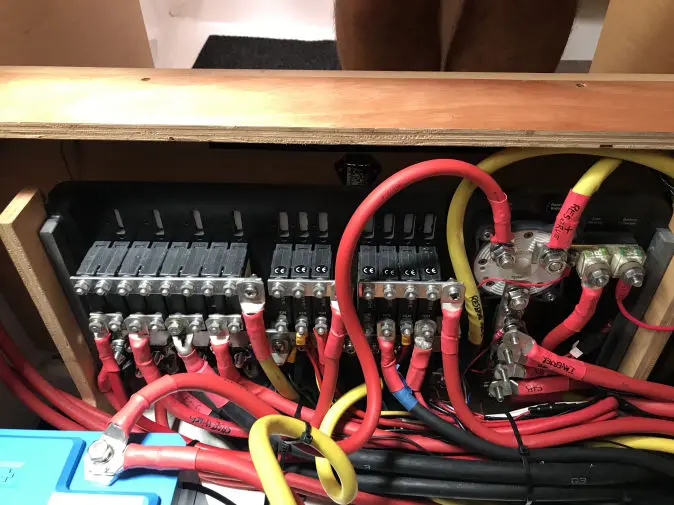
Lithium Battery & Thermal Runaways
A thermal runaway lithium battery fire is up there with uncontrolled gas fires, as one of the worst-case fire scenarios on a small vessel.
While most fires have some form of management or fire control, a lithium thermal runaway battery fire does not.
Today’s batteries, whether it be lead-acid, AGM or Lithium are all very safe as long as manufacturer guidelines are strictly complied with.
Buying Lithium Batteries
Lead-acid and AGM batteries are well tried and tested, with most of their ventilation and fire challenges being well documented.
The challenge with lithium batteries is the myriad of cheaper lesser known lithium brands now coming on the market via social media to private buyers, bypassing reputable retailers.
We need to remind ourselves that reputable retailers have a lot to lose if their recommended batteries fail (including lawsuits from Insurance companies), so they have normally done their homework and carry reliable home-grown warranties.

Is a Thermal Runaway a fire?
Lithium batteries currently fall in the Class B fire category, which means that the standard ABC fire extinguisher can be used.
This, however, is no use if there is a ‘thermal-runaway’ situation within a lithium battery bank.
Thermal runaway fires are extremely difficult, if not impossible, to stop or extinguish.
A simple Google search about lithium thermal runaways will highlight the record so far in the aviation sector, where fires present a particular problem, their lithium cargo record being far from positive.
Legal Liabilty
Recently chatting to someone who had built their own lithium battery bank from imported cells, we found them ill-prepared for a thermal runaway. Their cells had no protection.
If an incident occurred, would the Insurer come to the party? The two Insurers I spoke to said NO. One even stated that your third party liability in a marina is at risk.
So where does it leave a private person, thinking of buying and installing our own?
It's RISK (incident at sea, marina or hardstand) verse REWARD (doing it cheaply).

Insurance Warning
There are incidents and aircraft hull losses caused by thermal runaways in freight loads of lithium batteries.
Technology today also have records of thermal runaways on smaller lithium powered portable devices such as mobile phones and laptops.
Battery packs with thermal runaways on eBikes and eScooters (two in Brisbane Australia - March 2024). So, it certainly does occur.
It is, however, the lack of control of a thermal runaway that is raised in this article.
If you (a private individual) are the importer and, are bypassing a professional supplier and/or installer, here are some thoughts to add to your toolbox.
Number one: Check with your Insurance company, you may find your insurance is void by installing your own lithium. Surveyors will ask you...we got asked for proof by both parties.
